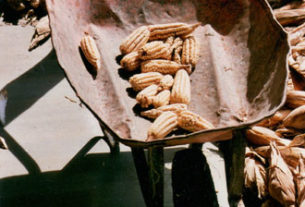Yes, this is a dirty topic. However it is a common to question about whether or not one can throw the toilet paper into the toilet. The answer is a definite maybe.
Getting back to the question at hand (so to speak), to answer we must understand the system being used to treat the waste products. And to be clear, when I say, “waste” or “black water,” I am referring to everything that you flush down your toilet. If you have a municipal sewer system, yes you can flush the paper down the toilet since the municipal system can handle the paper from toilets. And if you have a private septic tank on your property, the same answer can be true since the bacteria in the septic tank can help break down the cellulose in the paper. Nevertheless, an excessive amount of toilet paper can be a problem by overloading the tank and slowing down the bacterial activity in the septic tank. Hopefully the septic tank is healthy and large enough to handle the volume of material that needs to be treated.
Now we should know that only the villages and towns of the Lake Chapala (i.e. Chapala, Jocotepec, Ajijic, San Antonio Tlayacapan, San Juan Cosala, etc) have municipal wastewater treatment plants to handle the “black water” from the toilets in their respective communities. However in village businesses, it is common to see a sign in the bathroom asking you not to throw tissue paper down the toilet. The problem is not the municipal sewer system, but likely the drainpipe between the toilet and the street drain connection.
The typical problem is the type of pipe that has been used. Traditionally, drains from the house to the street were short sections of red clay pipes joined together. Over time, the clay pipes become porous and rough on the interior surface, and the joints between the sections of the pipes open up. Or due to low strength, the sidewalls of the clay pipes slowly collapse. The combination of these three deleterious conditions do not promote the easy flow of toilet paper along the sections of pipe. The toilet paper or waste product can become hung up on the joints, breaks or rough surfaces. Once stopped along the sidewall, they become a collection point for more and more toilet paper and waste, which eventually clogs the pipes and stops the flow of waste.
More modern drains systems use plastic piping (typically PVC) for the drainage of waste. These plastic pipe systems tend not to have the hang up points along the length of pipe for the toilet paper. There is less chance for a clog forming in the drain, plastic piping is more favorable to toilet paper movement along the length of the drain pipe.
But there are other factors that affect the movement of “waste” along the length of the drainpipe. The slope or inclination of the pipe affects the waste flow. If the pipe is too steep, the waste flows quickly down the pipe. However, elements of the waste could become “stuck” to the side of the pipe and become a point for future toilet paper to hang up, helping to form larger and larger clogs that eventually plug the drainpipe. Ideally, the drainpipe is sloped or inclined approximately 2% or ¼ inch per foot of length, to keep the waste in the pipe, wet and amid liquid to lubricate and promote its slow but constant movement along the length of the pipe.
So as your are about to throw the paper into the toilet, use your x-ray vision and determine what type of pipes are underground and how they were installed. This would be easy if you were Superman, but maybe we just need to respect the sign in the restaurant’s bathroom.


